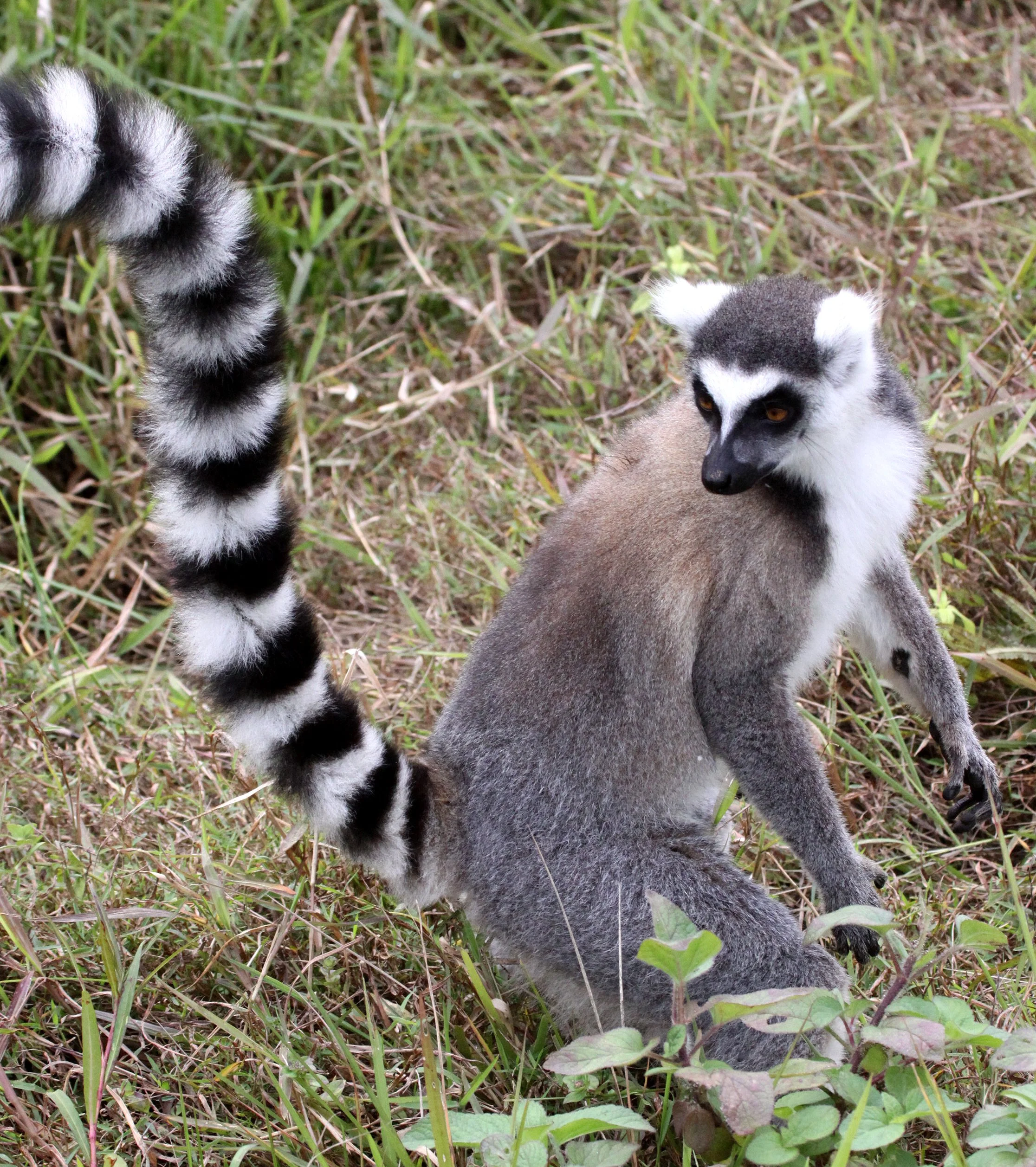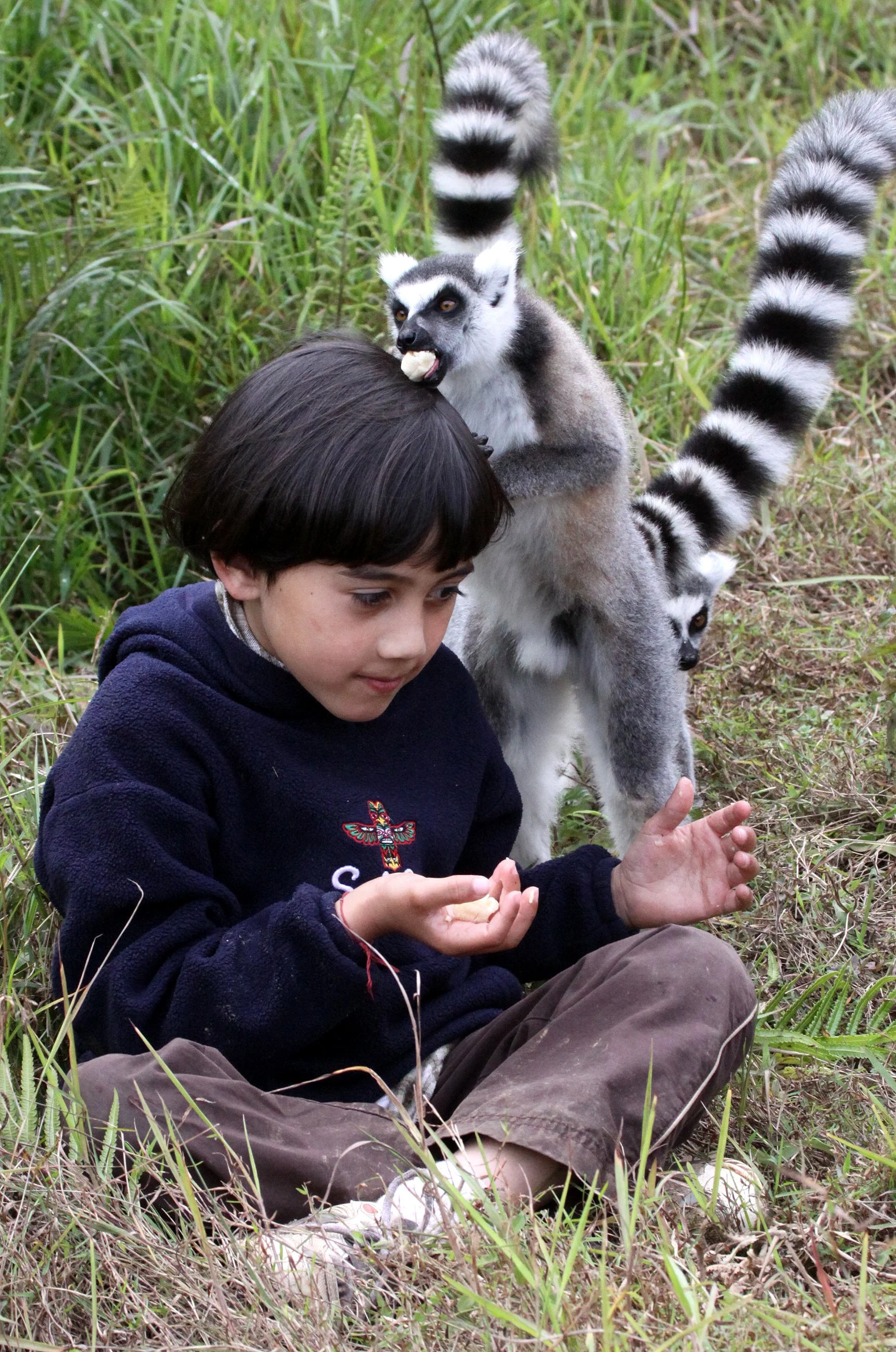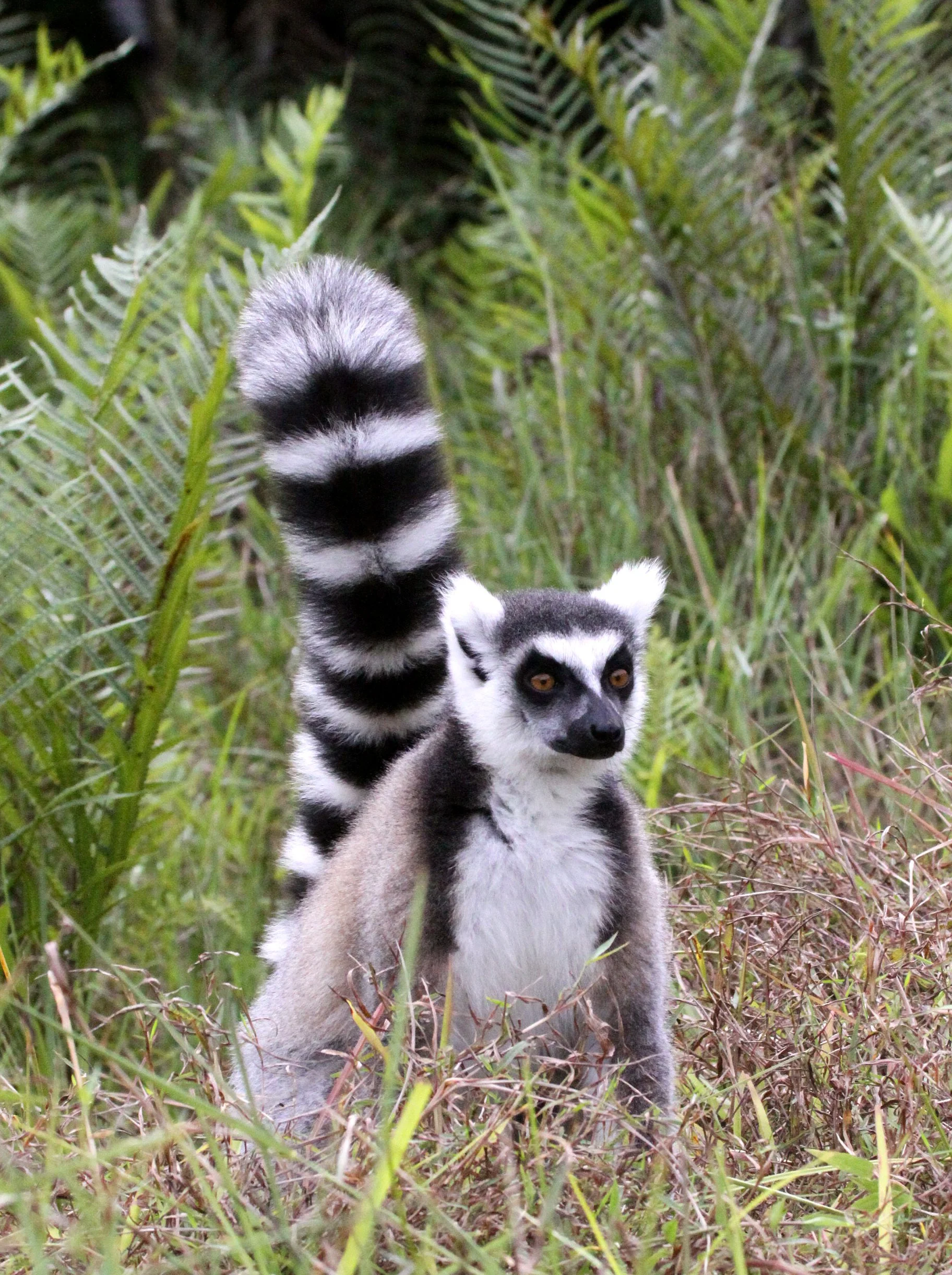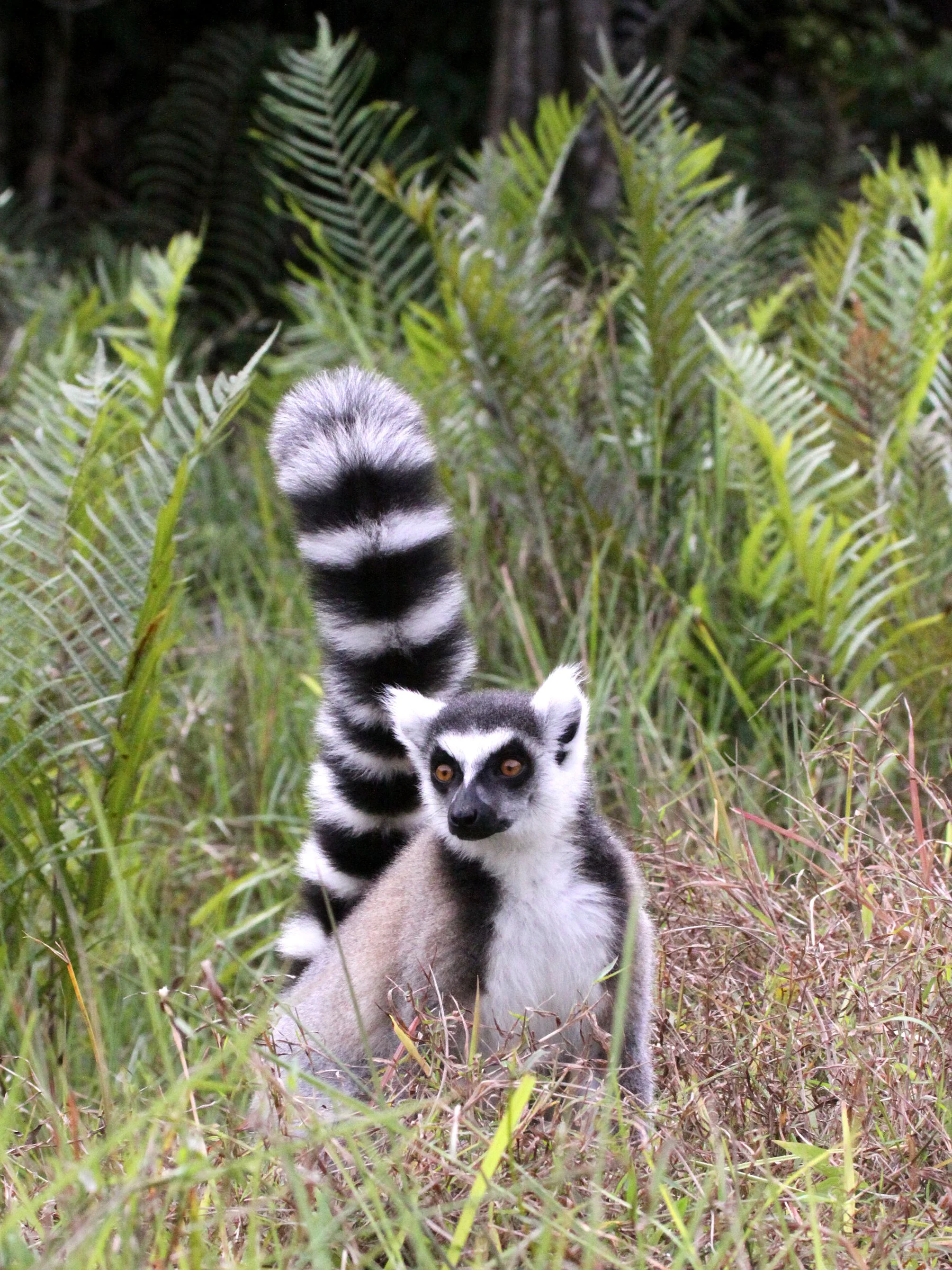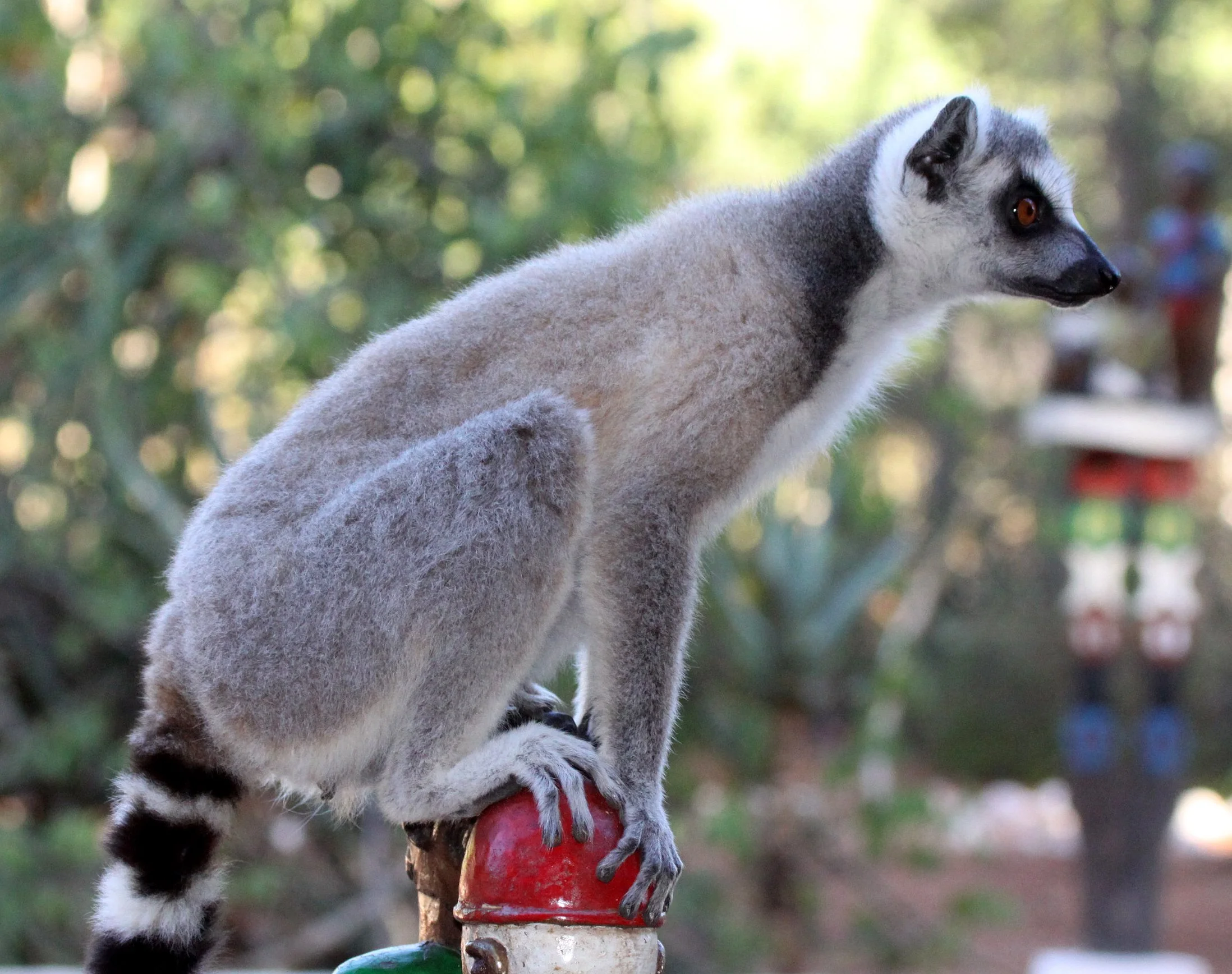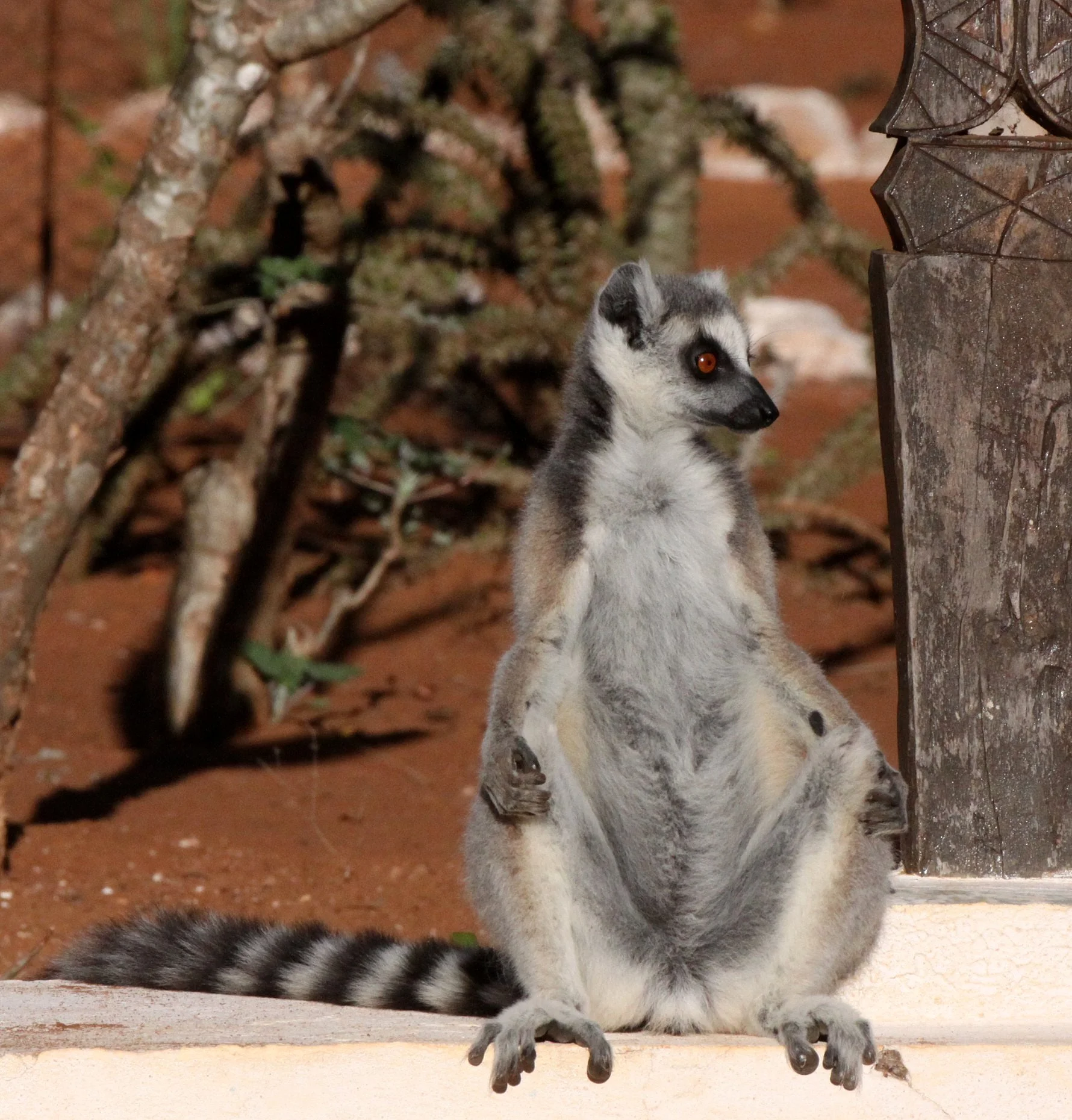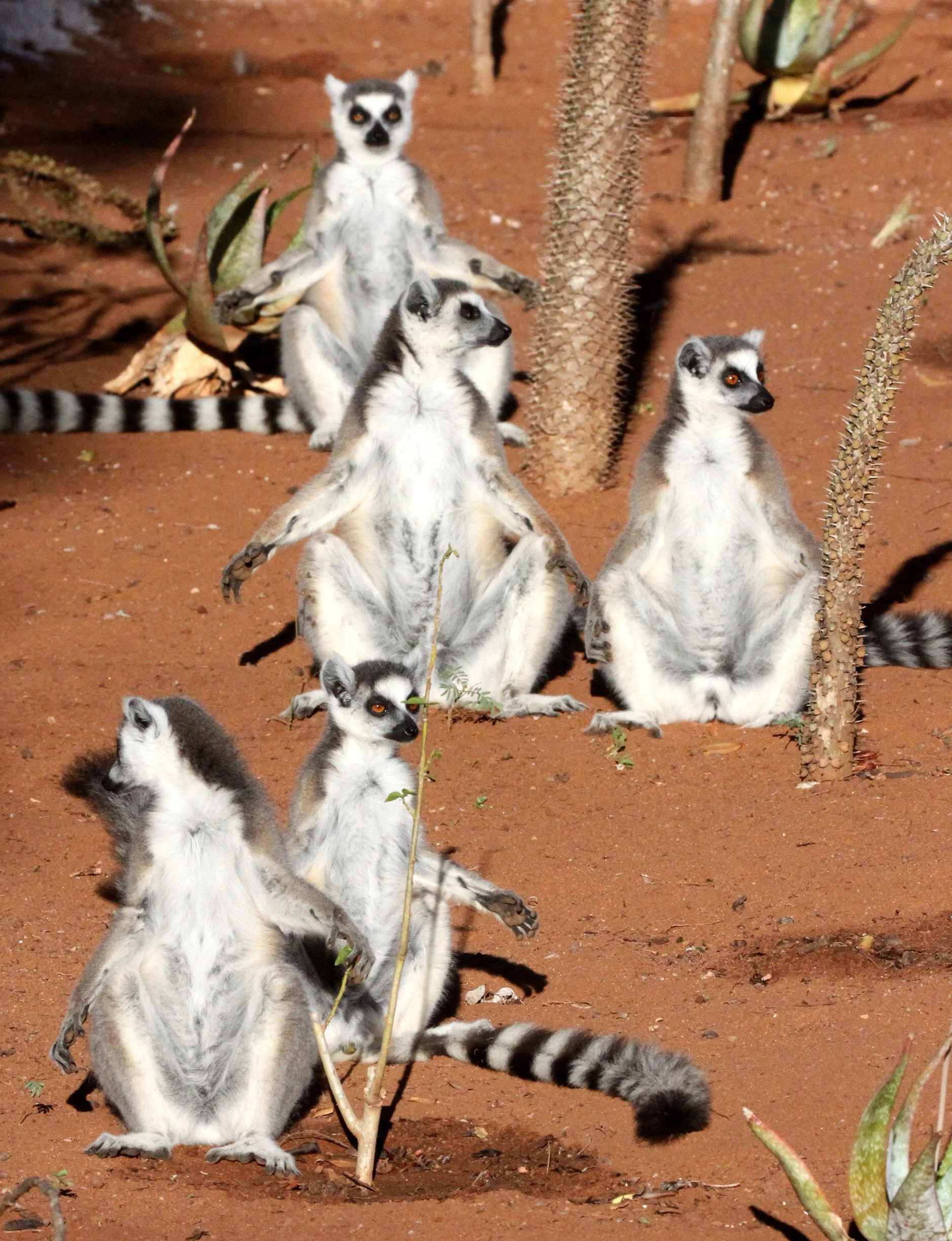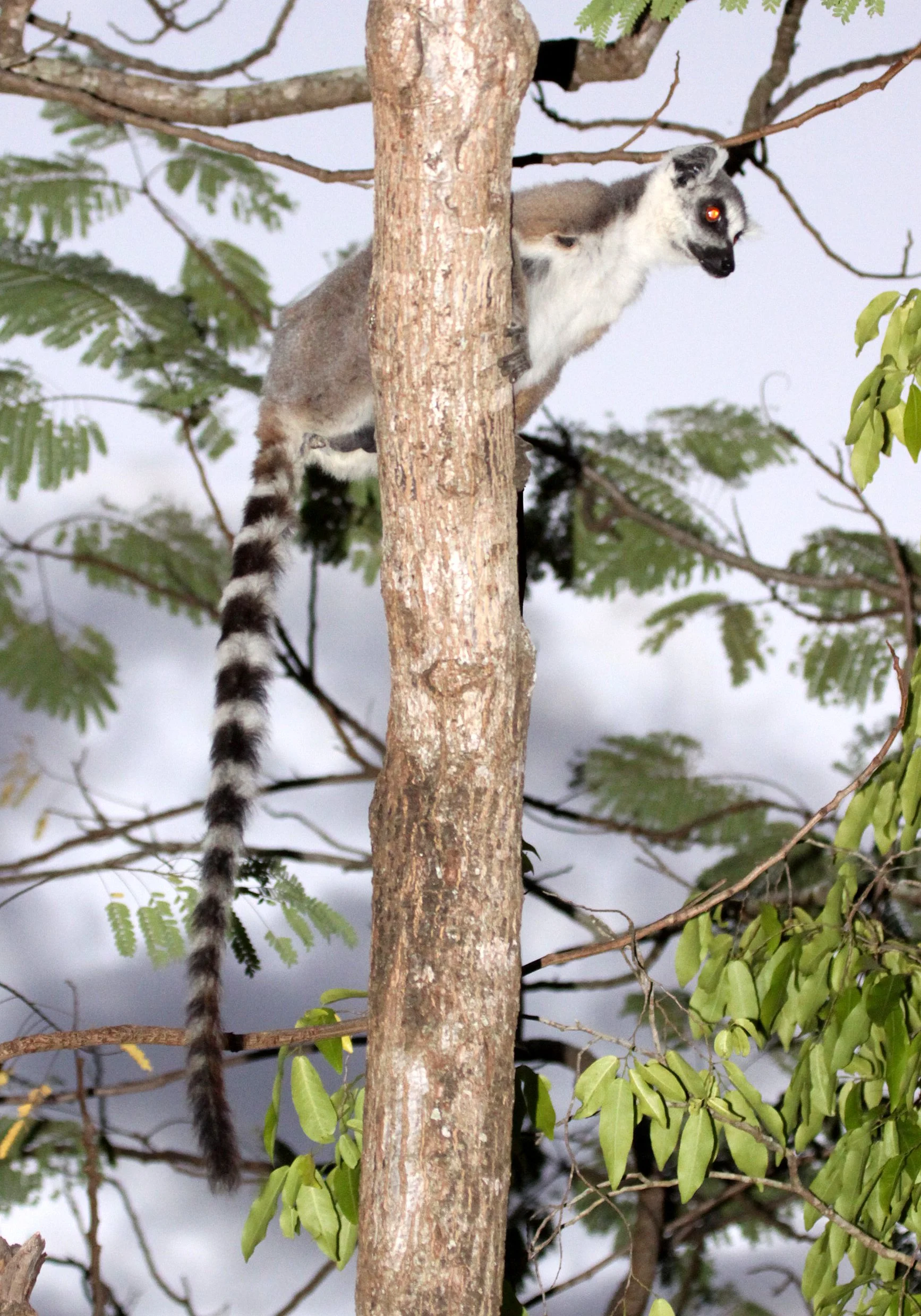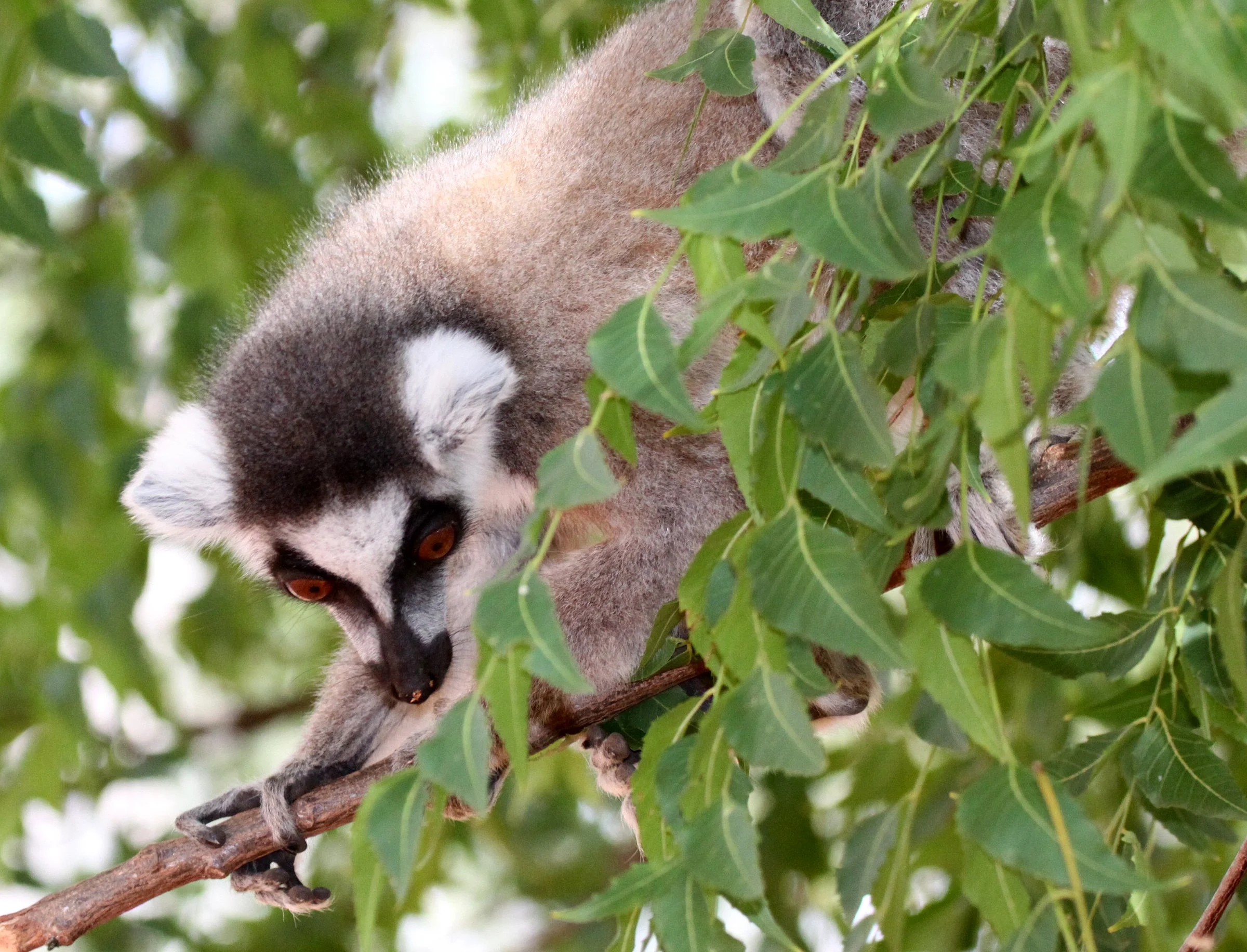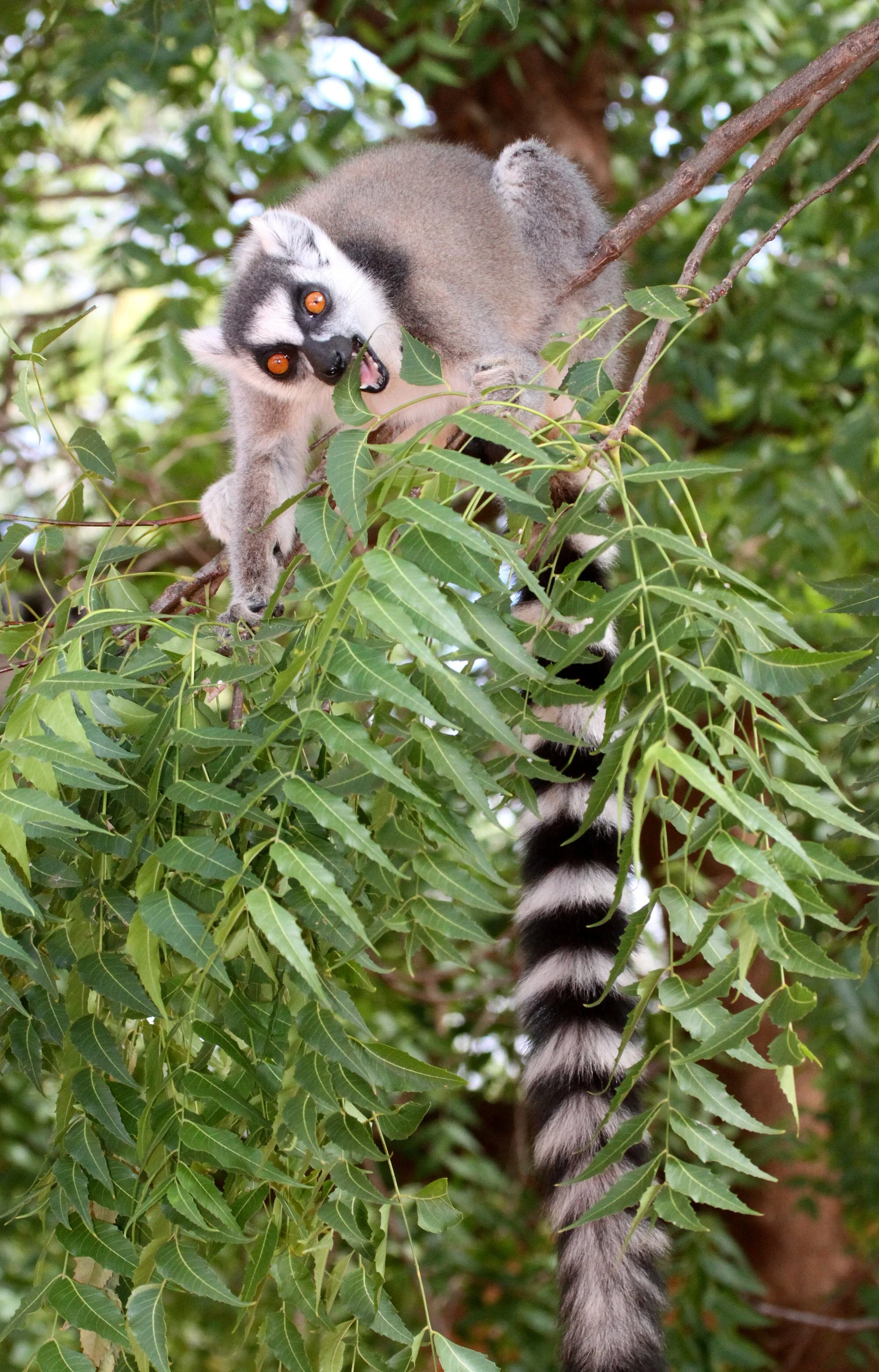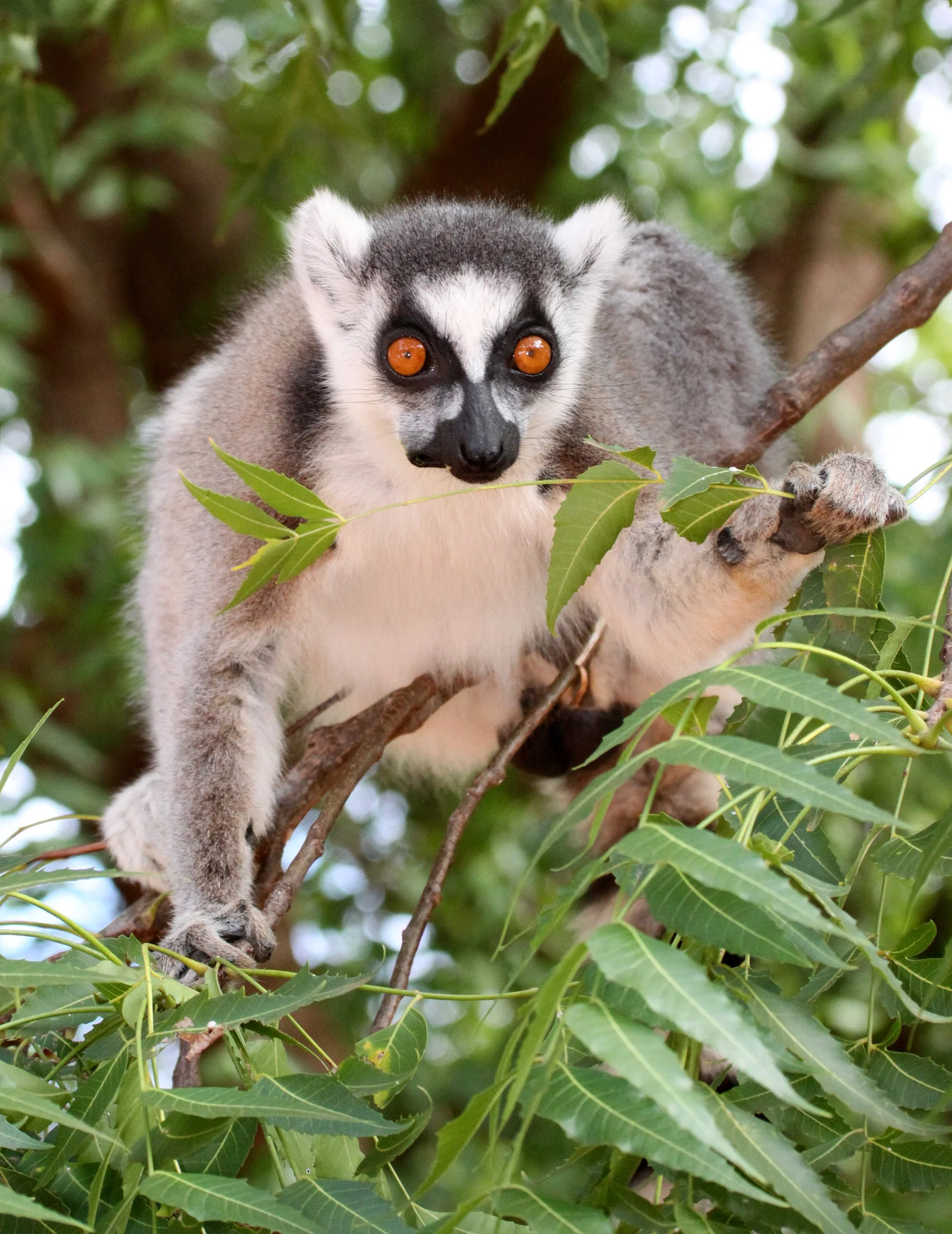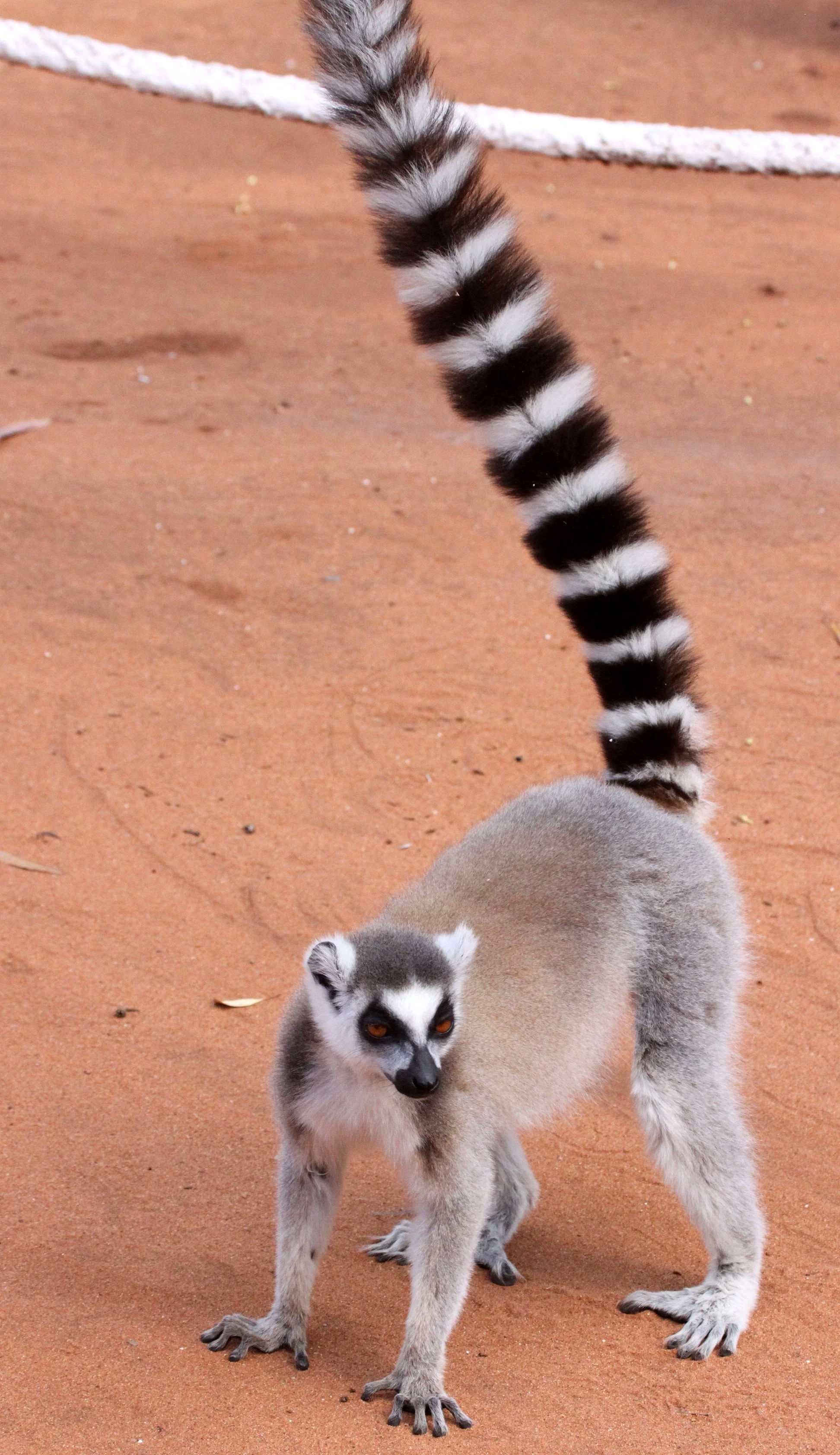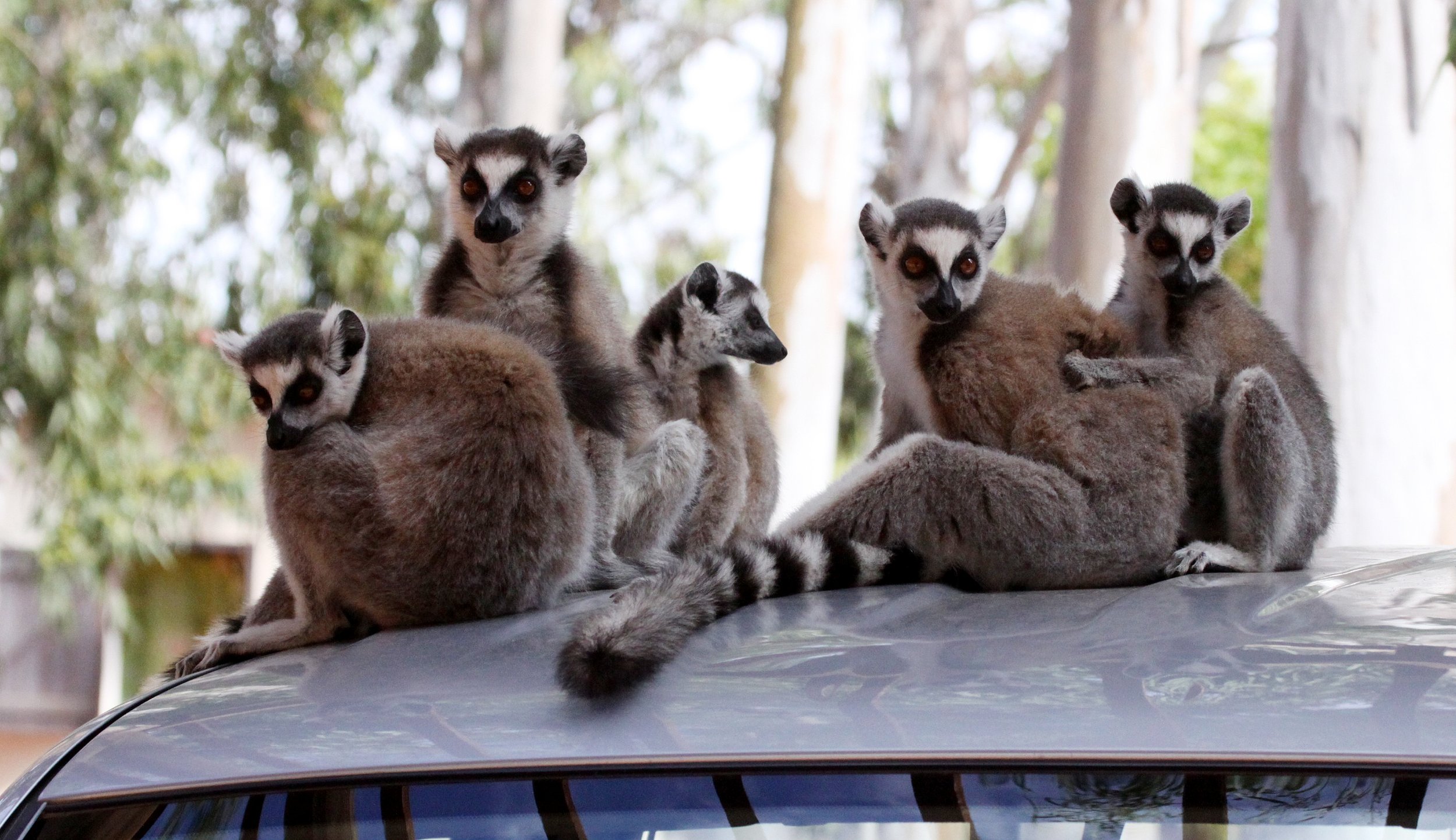The ring-tailed lemur (Lemur catta) is a large strepsirrhine primate and the most recognized lemur due to its long, black and white ringed tail. It belongs to Lemuridae, one of five lemur families, and is the only member of the Lemur genus. Like all lemurs it is endemic to the island of Madagascar and endangered. Known locally in Malagasy as maky ([makʲ] (listen), spelled maki in French) or hira, it inhabits gallery forests to spiny scrub in the southern regions of the island. It is omnivorous and the most terrestrial of extant lemurs. The animal is diurnal, being active exclusively in daylight hours.
The ring-tailed lemur is highly social, living in groups of up to 30 individuals. It is also female dominant, a trait common among lemurs. To keep warm and reaffirm social bonds, groups will huddle together. The ring-tailed lemur will also sunbathe, sitting upright facing its underside, with its thinner white fur towards the sun. Like other lemurs, this species relies strongly on its sense of smell and marks its territory with scent glands. The males perform a unique scent marking behavior called spur marking and will participate in stink fights by marking their tail with their scent and wafting it at opponents.
As one of the most vocal primates, the ring-tailed lemur uses numerous vocalizations including group cohesion and alarm calls. Experiments have shown that the ring-tailed lemur, despite the lack of a large brain (relative to simiiform primates), can organize sequences, understand basic arithmetic operations and preferentially select tools based on functional qualities.
Despite reproducing readily in captivity and being the most populous lemur in zoos worldwide, numbering more than 2,000 individuals, the ring-tailed lemur is listed as endangered by the IUCN Red List due to habitat destruction and hunting for bushmeat and the exotic pet trade. As of early 2017, the population in the wild is believed to have crashed as low as 2,000 individuals due to habitat loss, poaching and hunting, making them far more critically endangered
Linnaeus first used the genus name Lemur to describe "Lemur tardigradus" (the red slender loris, now known as Loris tardigradus) in his 1754 catalog of the Museum of King Adolf Frederick. In 1758, his 10th edition of Systema Naturae listed the genus Lemur with three included species, only one of which is still considered to be a lemur while another is no longer considered to be a primate. These species include: Lemur tardigradus, Lemur catta (the ring-tailed lemur), and Lemur volans (the Philippine colugo, now known as Cynocephalus volans). In 1911, Oldfield Thomas made Lemur catta the type species for the genus, despite the term initially being used to describe lorises. On January 10, 1929, the International Commission on Zoological Nomenclature (ICZN) formalized this decision in its publication of Opinion 122.
The ring-tailed lemur shares many similarities with ruffed lemurs (genus Varecia) and true lemurs (genus Eulemur), and its skeleton is nearly indistinguishable from that of the true lemurs. Consequently, the three genera were once grouped together in the genus Lemur and more recently are sometimes referred to as subfamily Lemurinae (within family Lemuridae). However, ruffed lemurs were reassigned to the genus Varecia in 1962, and due to similarities between the ring-tailed lemur and the bamboo lemurs, particularly in regards to molecular evidence and scent glands similarities, the true lemurs were moved to the genus Eulemur by Yves Rumpler and Elwyn L. Simons (1988) as well as Colin Groves and Robert H. Eaglen (1988). In 1991, Ian Tattersall and Jeffrey H. Schwartz reviewed the evidence and came to a different conclusion, instead favoring to return the members of Eulemur and Varecia to the genus Lemur. However, this view was not widely accepted and the genus Lemur remained monotypic, containing only the ring-tailed lemur. Because the differences in molecular data are so minute between the ring-tailed lemur and both genera of bamboo lemurs, it has been suggested that all three genera be merged.
Because of the difficulty in discerning the relationships within family Lemuridae, not all authorities agree on the taxonomy, although the majority of the primatological community favors the current classification


